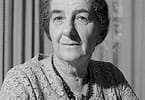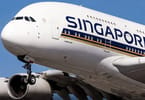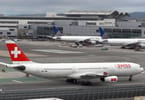Terrorist watch lists used by the Transportation Security Administration may not be as large as previously surmised, the Homeland Security Department’s top official said.
Homeland Security Secretary Michael Chertoff publicly disclosed the sizes of the TSA’s no-fly and selectee lists last week in an attempt to quash rumors that the lists are ballooning. In a news conference in Washington, D.C., Chertoff said less than 2,500 people were on the no-fly list, and the majority of them were overseas.
“Less than 10 percent are Americans,” Chertoff said.
There are also fewer than 16,000 selectees and most are not Americans, he said, without giving a percentage.
Some estimates by civil rights groups had put the number of Americans on the watch lists in the hundreds of thousands.
The Electronic Privacy Information Center continues to describe the watch lists as “riddled with inaccurate and obsolete data.” Last week, the American Civil Liberties Union maintained its stance that the “bloated lists” have more than 1 million names, according to Barry Steinhardt, director of the ACLU’s Technology and Liberty Program.
Homeland Security officials said some names on the lists come with aliases — sometimes many of them — which can make the lists seem bigger. Mistaken identity problems were also a chief criticism of earlier attempts at database-based security initiatives such as the Computer Assisted Passenger Prescreening System. That system, intended to examine commercial and government databases to assess the level of risk each individual passenger posed, was scrapped in 2004 amid a outcry about invasion of privacy. Work on a different data mining program, called Secure Flight, was announced shortly thereafter.
Now, Chertoff’s disclosure of the size of the watch lists comes as Homeland Security readies for the launch of the Secure Flight system next year.
A final rule on Secure Flight was announced last week and will likely be published in the Federal Register in December or January, officials said. Airlines are expected to comply with the final rule 270 days after publication.
The rule calls for airlines to send passenger information and certain nontraveler information to a federal data collection center where the government will pre-screen passengers. Individual airlines now use their own computer systems. Federal officials refused to give out the false match rate under the old system.
Nine federal agencies maintain watch lists with names of known or suspected terrorists or criminals. A consolidated master list is maintained by the Terrorist Screening Center. Under Secure Flight, airlines will take flight itinerary information, plus full passenger name, birthdate and gender, and send it to one of two clearinghouses, where comparisons will be made with watch lists. The additional information is expected to better identify — and clear — passengers whose names might resemble that of someone legitimately on the lists, Chertoff said.
When possible, information must be sent by the airlines 72 hours before a flight.
Passengers will then be put into one of three categories — no match, potential match or positive match.
Based on the boarding pass information sent back to the airlines, TSA screeners will then screen at the checkpoints accordingly, officials said.
If you’re a positive match on the no-fly list you will not fly, period. If you’re a match on the selectee list, you will undergo additional screening, but you can still fly. You might also be randomly selected for additional screening even if you are not on the list.
If you’re a potential match but are eventually cleared by Homeland Security’s redress system, you will be given a redress number. If you provide that number, officials can quickly look up your file and clear you for flight.
Officials believe that once Secure Flight is in place, 99 percent of passengers should be able to quickly navigate their way through security.
To address privacy concerns, clearinghouses will keep passenger information for seven days, and then the information will be erased. The relatively quick erasure of most data was applauded by the ACLU. If you are a potential match, however, the information will be kept for seven years. If you are on the no-fly list, the information will be kept for 99 years.
WHAT TO TAKE AWAY FROM THIS ARTICLE:
- Now, Chertoff's disclosure of the size of the watch lists comes as Homeland Security readies for the launch of the Secure Flight system next year.
- A final rule on Secure Flight was announced last week and will likely be published in the Federal Register in December or January, officials said.
- Homeland Security Secretary Michael Chertoff publicly disclosed the sizes of the TSA's no-fly and selectee lists last week in an attempt to quash rumors that the lists are ballooning.





















